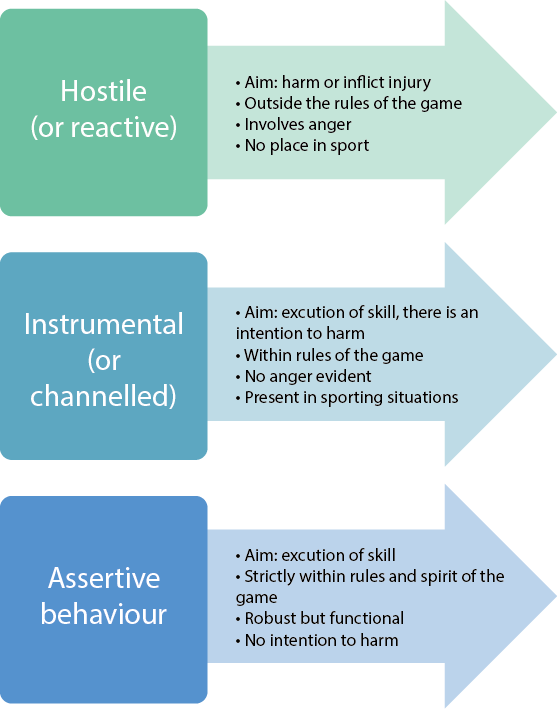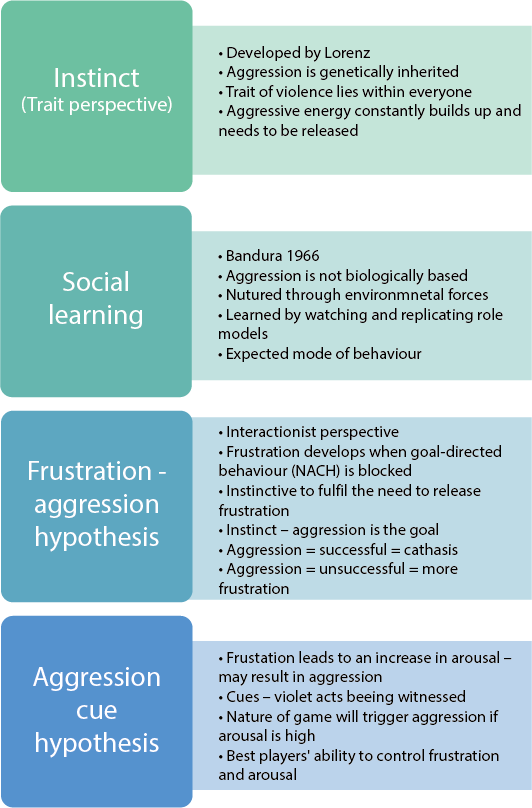Content
- Causes of aggression
- Managing and controlling aggression
There are many factors that contribute towards aggressive behaviour, and it is important to identify the contributors, in order to be assertive and channel behaviour under the confines of the laws of the game.
Aggressive behaviour tends to be the consequence of one or more contributors; some of the antecedents are listed below:
“Any behaviour that is intended to harm another individual by physical or verbal means.”
Aggression can be classified into three forms:

Theories of aggression:

Aggression and aggressive behaviour can be controlled externally as well as using internal strategies.
| External | Internal |
|---|---|
| Punishment | Stress management techniques |
| Withdraw violet players from situation | Withdraw self from situation |
| Emphasis on positive role models | Performance goals |
| Reinforcement of non-aggressive behaviour | Change in attitude |